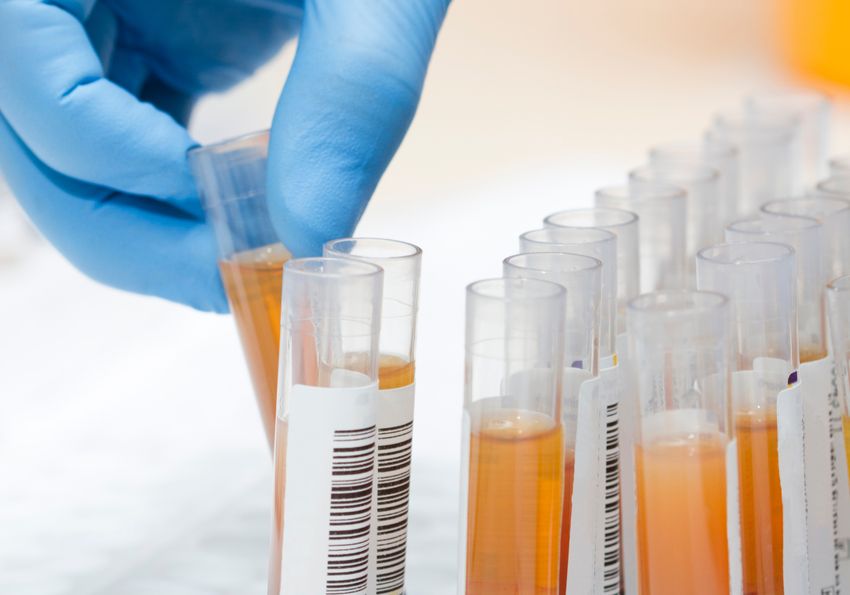Proteins found in blood plasma can provide critical insights into human health, acting as biomarkers that scientists can use to understand disease and provide personalized care. Yet, capturing the full complexity of the plasma proteome has remained a technical hurdle. Conventional screening methods can be slow and often miss low-abundance proteins.
Aaron Gajadhar, PhD Director of Strategic Applications Seer
In this Innovation Spotlight, Aaron Gajadhar, the director of strategic applications at Seer, discusses the potential contained within the plasma proteome and introduces Proteograph® ONE, a system that uses engineered nanoparticles to prepare proteins for mass spectrometry-based analysis. Coupled with an automated workflow and advanced data analysis, this new screening platform circumvents common bottlenecks in mass spectrometry-based protein analysis, allowing scientists to conduct population-scale studies while delving deep within the proteome.
Why is it important to screen the plasma proteome?
Proteins in the vascular system offer a portrait of a person’s health. In routine clinical screening, single protein assays measure the plasma protein levels of various proteins because they give a snapshot of many indicators, including liver function, nutritional status, inflammation, and immune system activity. Beyond the general check-up protein targets, thousands of additional proteins in the circulating plasma proteome represent an untapped reservoir of markers that may give a real-time snapshot of additional early disease signals or health imbalances. Insights from characterizing the plasma proteome are driving advances in personalized medicine by capturing biological context that genomics or transcriptomics alone cannot provide. In fact, recent plasma proteomics findings are expanding our understanding of how protein levels are linked to aging, early signs of cancer development, the response to targeted cancer therapies, cognitive decline, and metabolic diseases. In the future, a holistic understanding of the plasma proteome will ultimately lead to many novel blood-based biomarkers, allowing more robust surveillance of an individual’s health, disease risk, and disease status.
What dynamic range is ideal for screening the plasma proteome?
Blood plasma is an extraordinarily complex biofluid, comprised of many types of biomolecules. These include proteins that span a large gradient of concentrations, from structural and transport proteins in the mg/mL range to cytokines and rare peptide hormones in the fg/mL range. A central challenge for any analytical platform is detecting low-abundant proteoforms or peptide variants—molecules that can initiate disease or serve as critical components of a biomarker signature—despite their concentrations being obscured by proteins present at levels more than 10 orders of magnitude higher. An ideal screening technology would allow detection and quantification of protein concentrations spanning a massive concentration gradient, while simultaneously screening the entire plasma proteome in a single analysis. Before Seer, this analytical challenge was an insurmountable barrier, leading to a trade-off where immuno-based methodologies provided sensitive measurements of proteome subsets rather than unbiased measurements of the entire composition of the proteome.
What is Seer’s Proteograph platform and what data does it produce?
Mass spectrometry is the most definitive and unbiased tool for interrogating the proteome, unlike immuno-based platforms that measure only subsets of proteins and are unable to resolve important protein variants and isoforms that exist in the human population. Yet, until recently, scaling deep proteomic studies was not feasible due to bottlenecks with sample preparation and data analysis. Historically, researchers faced a trade-off: either measure only a few hundred abundant proteins across large cohorts, or probe deeper but in limited studies with a handful of samples. The Proteograph platform removes this compromise, enabling both depth and scale in plasma proteome analysis. This is achieved through Seer’s proprietary engineered nanoparticles, combined with automation to standardize sample preparation workflows and ensure reproducibility. Used with the Proteograph Analysis Suite, the first cloud-native solution capable of scaling proteomic studies to tens of thousands of samples, the platform generates comprehensive, high-resolution data spanning the full dynamic range of the plasma proteome and enables new insights into proteoforms and biomarker signatures that underlie human health and disease.
What are the advantages of the Proteograph ONE workflow versus prior iterations?
Proteograph ONE makes population-scale, deep plasma proteomics feasible by combining scalability, cost efficiency, and robustness. The first Proteograph product required five nanoparticle wells and five liquid chromatography-mass spectrometry (LC-MS) analyses per sample, processing only 16 samples in about 7.5 hours. Proteograph XT improved throughput to 40 samples by reducing the process to two wells and two analyses. Anticipating even larger studies, Seer developed Proteograph ONE, which streamlines the workflow to a single well and one LC-MS analysis, doubling throughput to 80 samples while reducing run time to around 5 hours, which fits easily within a workday. Crucially, this efficiency gain does not compromise data quality; Proteograph ONE delivers the same depth and reproducibility as before. Combined with the Proteograph Analysis Suite and next-generation mass spectrometry, the platform now supports studies at a scale never before possible. We believe 2025 will mark the inflection point where population-scale proteomics expands into hundreds of thousands of samples.
How does Proteograph ONE facilitate plasma proteome screening?
Plasma proteome screening requires breadth, capturing proteins across more than 10 orders of magnitude in concentration. But it also requires sensitivity to reveal protein signatures that are not predetermined, enabling discovery of unanticipated biology. Proteograph ONE addresses this by combining engineered nanoparticles with streamlined automation in a single workflow, enabling reproducible access to the full dynamic range of the plasma proteome. By reducing the process to one well and one LC-MS injection, it delivers the throughput needed for population-scale studies without sacrificing depth of coverage. Just as importantly, Proteograph ONE broadens access to proteomics, empowering researchers without prior expertise or specialized equipment to generate high-quality, reproducible insights. Recent work by Maik Pietzner and Claudia Langenberg, prominent researchers in population health and genomics from the University of Cambridge who historically have not included proteomics in their research, demonstrated that understanding disease mechanisms requires plasma proteome studies at population scale, where proteoform variation across diverse communities can be measured and linked to health outcomes.1 Proteograph ONE provides the scale and accessibility to make such insights broadly achievable.

Seer’s collaboration with Korea University leverages Proteograph ONE to analyze 20,000 plasma samples, aiming to identify early biomarkers for cancers in young adults and shift detection to pre-symptomatic stages.
©iStock, eldemir
How does the platform integrate with other technologies?
The Proteograph platform was designed to integrate seamlessly with the broader proteomics ecosystem. At the front end, proprietary engineered nanoparticles are paired with automation to generate reproducible, information-rich samples from plasma or other biofluids. These samples are directly compatible with high-resolution mass spectrometry, and when combined with next-generation instruments such as Thermo Scientific Orbitrap Astral™ mass spectrometers enable population-scale deep proteome analysis. On the back end, the Proteograph Analysis Suite provides a cloud-native environment for scalable data processing, capable of handling tens of thousands of samples while interfacing with downstream bioinformatics pipelines. This flexibility allows researchers to integrate proteomic data with other omics layers—genomics, transcriptomics, and metabolomics—to build a more complete view of disease mechanisms and biological regulation. In this way, the Proteograph workflow not only extends the reach of mass spectrometry but also acts as a bridge that connects proteomics insights into multiomic and systems biology frameworks.
What is the relationship between the Proteograph platform and AI-driven processes?
The Proteograph platform generates large-scale, high-quality proteomic datasets that are ideally suited for AI-driven analysis. By enabling reproducible profiling of tens of thousands of proteins across diverse populations, the platform provides the depth and breadth of data needed to train machine learning models and uncover patterns that would be difficult to discern otherwise. Users are already leveraging this foundation: PrognomiQ has combined Proteograph-based untargeted proteomics with other omics layers to train classifiers for lung cancer detection, achieving high sensitivity and specificity, even at early disease stages.2 At the population level, Queen Mary University researchers have also integrated deep plasma proteomes with genetic information across diverse cohorts, demonstrating how large, heterogeneous datasets reveal biology that targeted assays often miss, which is an essential prerequisite for effective model training.1 In this way, the relationship is synergistic: Proteograph delivers the unbiased data foundation, while AI transforms that data into insights that accelerate biomarker discovery, disease characterization, and precision health strategies.
What is on the horizon for Seer?
Seer is focused on expanding both the scale and accessibility of proteomics. With the launch of Proteograph ONE, we have enabled population-scale studies that make it possible to probe plasma proteomes across hundreds of thousands of samples, capturing variation across diverse communities. Looking ahead, we see two major directions. First, we are continuing to democratize proteomics by making workflows more automated, standardized, and approachable for researchers who have not historically had access to this level of insight. Second, we are extending our reach globally through initiatives such as our collaboration with Korea University, where Proteograph ONE will be used to analyze 20,000 plasma samples—including 15,000 from cancer patients and 5,000 healthy controls—to accelerate biomarker discovery for early-onset cancers. These types of efforts will set the foundation for novel biomarkers, improved disease risk stratification, and precision health strategies worldwide.
Regarding the early-onset cancer project, how is Proteograph ONE uniquely suited to this type of study, and what do you hope to learn?
Proteograph ONE is uniquely suited to the Korea University study because it combines population-scale throughput with the depth needed to uncover subtle proteomic signals that precede overt disease. The real promise lies in identifying early-onset cancer biomarkers in young adults in their 20s and 30s who account for nearly 10 percent of cancer cases in Korea, which are often diagnosed late, when treatment options are limited and outcomes poor. If we can detect these cancers pre-symptomatically, it could fundamentally shift cancer care from reactive treatment to proactive management. Earlier detection allows for interventions when the disease is most curable, reduced treatment burden, and dramatically improved survival. At the population level, it could also reduce healthcare costs and transform cancer from a late-stage crisis into a manageable condition detected early. That is the scale of change we hope to drive.


